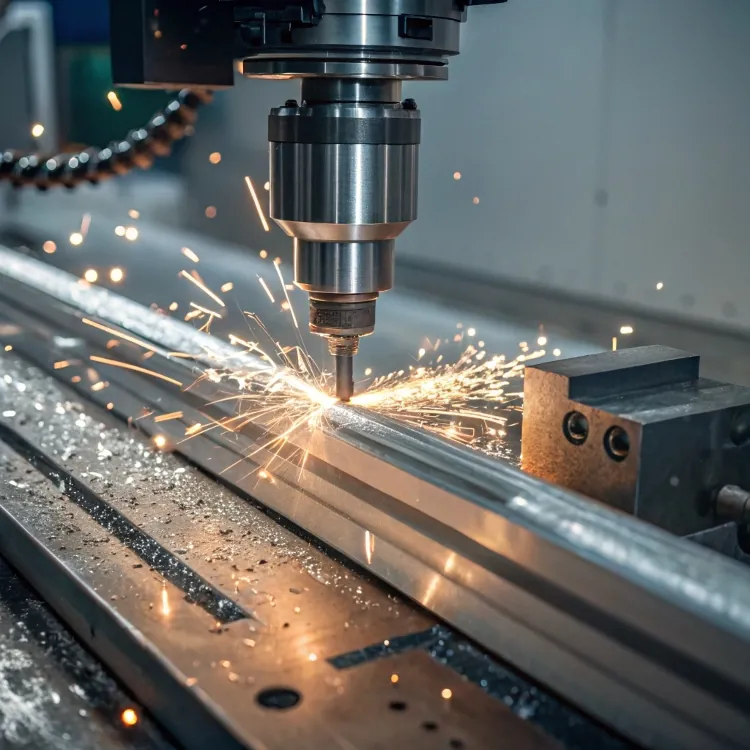Machining Services for 2024 Aluminum Tube: What’s Available?

I once worked on a project using 2024 aluminum tubing for a high-strength aerospace frame. Getting the right machining services made all the difference.
In 2024, aluminum tube machining includes CNC cutting, turning, milling, drilling, bending, welding, and laser etching—with tolerances down to ±0.005 mm.
Let’s explore which services are used, how to choose them, and what tolerances you can expect.
What machining services are offered for aluminum tubes in 2024?
Fabricators now offer a wide range of services tailored to 2024 aluminum tubes:
| Service Type | Description |
|---|---|
| CNC Cutting | Clean, precise tube length cutting with tight tolerances |
| CNC Turning | Perfect for round profiles, threads, and fine external cuts |
| CNC Milling | Creates slots, faces, and profiles on tube walls |
| Drilling & Tapping | Adds holes and internal threads with exact positioning |
| Tube Bending | Mandrel-assisted forming for 2D/3D bends |
| TIG/MIG Welding | Used for frame assemblies, brackets, and structural joints |
| Laser Etching | Barcodes, logos, and serial numbers for traceability |
| Surface Finishing | Anodizing, sandblasting, polishing, and powder coating |
| Hybrid 3D-CNC Machining | For complex geometries combining additive and subtractive |
Modern machining centers for aluminum tubes include both cutting and bending services.True
2024 providers offer CNC cutting, turning, bending, welding, and more in integrated workflows.
Laser etching on aluminum tubes has been phased out by 2024.False
Laser marking is still widely used for serial numbers, logos, and traceability.
Which CNC processes suit aluminum tube fabrication?
For best results, here’s how I match CNC methods to aluminum tube needs:
| CNC Process | Best For | Tolerance Range |
|---|---|---|
| Turning | Round features, threads, OD/ID operations | ±0.005–0.02 mm |
| Milling (3–5 axis) | Flat areas, slots, pockets, angled cuts | ±0.01–0.1 mm |
| Drilling/Tapping | Holes, fastener threads | ±0.05 mm typical |
| Tube Bending | Tight radius curves with mandrels | Depends on radius & wall |
| Hybrid Additive | Prototypes with complex geometry | ±0.1–0.2 mm |
CNC turning is great for tubes with smooth outer or inner features. For holes, grooves, or flat faces, I use milling. And for 3D curves, CNC tube benders give consistent results.
CNC milling provides better hole accuracy than standard turnover techniques.True
Milling allows precise hole placement and surface control.
Tube turning can't achieve tolerances finer than ±0.1?mm.False
High-end turning can reach ±0.005?mm tolerances.
How to choose services for custom tube profiles?
Choosing the right service is critical. I always ask myself:
-
What’s the shape?
- Simple round tube? Use turning.
- Slots, faces, angled ends? Use 3-axis or 5-axis milling.
-
What’s the tolerance?
- Basic structures need ±0.1 mm.
- Aerospace, medical, or dynamic parts may need ±0.01 mm or tighter.
-
Need complex bends or holes on curves?
- Combine CNC tube bending with secondary milling or laser ops.
-
Are post-processes required?
- Welding, anodizing, and polishing should be available in-house.
-
What’s the volume and lead time?
- For small runs, hybrid or low-setup systems are more cost-effective.
| Criteria | Best Service Approach |
|---|---|
| Simple OD threads | CNC turning |
| Slots + holes on flats | CNC milling (3 or 5 axis) |
| Complex curves | CNC bending with mandrel + post-mill |
| Full surface finish | Anodizing or powder coat after machining |
Specifying tighter tolerances always benefits budget.False
Tighter tolerances increase machining time and cost; specify only as necessary.
Using a machining partner offering all services reduces handling cost and lead time.True
Bundling machining, bending, welding and finishing in one workflow is efficient.
What tolerances are achievable in 2024?
Thanks to modern 5-axis and high-speed CNC, tight tolerances are standard:
| Process | Tolerance Range | Notes |
|---|---|---|
| CNC Turning | ±0.005–0.02 mm | Excellent for round parts |
| Precision Milling | ±0.01–0.05 mm | Good for most tube surface features |
| Hole Location Accuracy | ±0.05 mm | For drilled or tapped holes |
| Tube Extrusion Tolerance | ±0.2–0.6 mm (per profile) | Follows standard extrusion tolerances |
| Wall Thickness Limit | ≥0.5 mm recommended | Below this increases risk of collapse |
Precision CNC milling on aluminum tubes can achieve ±0.005?mm tolerance.True
Advanced turning and milling centers can achieve tolerances down to ±0.005?mm.
Wall thickness below 0.2?mm is safe for all CNC processes.False
Sub?0.5?mm walls risk collapse during machining; thicker walls recommended.
Conclusion
2024 aluminum tubes can be precisely machined using turning, milling, drilling, bending, and more. Choose methods based on your geometry, tolerance, and volume. Tolerances down to ±0.005 mm are possible, but only when you pick the right tooling and wall thickness.



